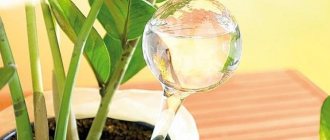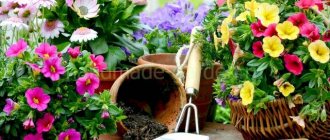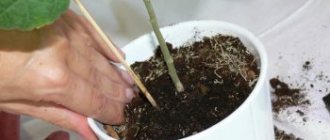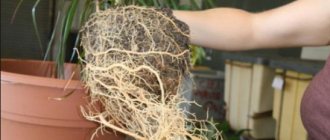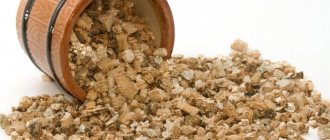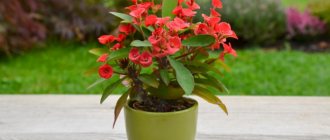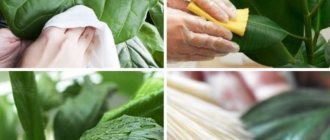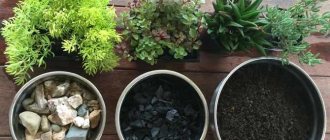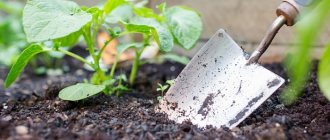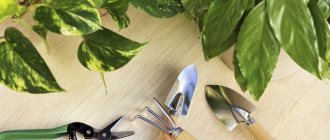How to remove earthworms from a flower pot
–Categories
- COOKING (2046)
- blanks (525)
- desserts (198)
- snacks (169)
- meat (152)
- Korean dishes (116)
- fish (109)
- cheese (101)
- jam (91)
- bread (68)
- salads (52)
- Pizza (43)
- microwave (40)
- HOME STYLE (28)
- Bread maker (26)
- sandwiches (20)
- dishes in pots (18)
- air fryer (16)
- carving (15)
- steamer (13)
- drinks (10)
- decoration of dishes (5)
- Multicooker (3)
- homemade drinks (2)
- rolls (1)
- Beauty and health (1481)
- prayers. conspiracies. (701)
- Health and medicine (529)
- CAKES (1387)
- PIES (346)
- baked goods (283)
- creams (196)
- CUPCAKES (90)
- Pie (80)
- rolls (71)
- no-bake cakes (56)
- Easter (55)
- Mastic (34)
- waffles (24)
- Let's learn how to decorate cakes! (18)
- icing (10)
- cake decoration (9)
- Dacha, vegetable garden. (500)
- Indoor floriculture (183)
- Tomatoes (31)
- Strawberries, wild strawberries (27)
- Pests, diseases (26)
- Cucumbers (25)
- Bow (16)
- Garlic (13)
- Carrots (13)
- Cabbage (9)
- Pepper (4)
- Beetroot (3)
- Potatoes (1)
- Radish (1)
- Country fakes (1)
- USEFUL (397)
- pictures (57)
- programs (52)
- Diary design (40)
- For children (28)
- hairstyles (28)
- new year (25)
- THANK YOU (23)
- SMILES (9)
- Congratulations (6)
- HANDCRAFTS (281)
- knitting (84)
- beads (69)
- Newspaper weaving (39)
- Fur (26)
- embroidery (5)
- MODULAR ORIGAMI (3)
- We sew ourselves (2)
- PRAYERS (200)
- MISCELLANEOUS (111)
- GARDEN (33)
- Shrubs, raspberries, currants. (28)
- PHOTOSHOP (31)
- frames for photoshop (8)
- Repair (29)
- Apartment design (11)
- Manicure (16)
- homemade cleaning products (14)
- Animals (13)
- For car enthusiasts (12)
- FENG SHUI (7)
- Horoscope (3)
-Music
–
–Search by diary
–Subscription by e-mail
-Statistics
Sunday, March 24, 2013 20:47 + in the quote book
How to remove earthworms from flower pots
A sure sign that there are a lot of earthworms (worms) in a pot with a houseplant are small black pellets on the surface of the ground. If the activity of earthworms in the soil is considered beneficial, then in indoor culture they are certainly harmful, since they greatly contribute to the alkalization of the soil.
To exterminate worms, there are the following methods:
1. Watering flowerpots with vinegar solution: 1 part of ordinary vinegar is diluted in 3-4 parts of water. Watering plants with this solution is done two or three times. Such watering does not harm the roots of plants.
2. Watering plants with a decoction of Dalmatian powder. For this purpose, take 2-3 teaspoons of Dalmatian powder (Persian) into 1/4 bucket of warm water, which is pre-boiled with boiling water. The broth for watering must have a temperature of at least 31-37.5 °C. Some time after watering, the worms crawl to the surface of the earth and even fall on the windows and floor. If you take a solution that is too strong, the worms do not come out and after a while they come to life in the ground.
3. Watering with a solution of potassium permanganate. The solution should not be very strong - its color should be darker than the color of weak tea. Although this solution burns the root lobes, it does not harm the plant.
4. Watering with quassin solution. Quassin, a concentrated decoction of the Quassin tree, is sold in pharmacies in metal ampoules. This ampoule dissolves in 10 buckets of water. source
There are currently no 100% chemical means of combating them. There is one way - increasing the acidity of the soil by mulching with peat and using fertilizers.
You can get rid of earthworms with citramon (dilute a citramon tablet in 1 liter of water and pour it) or with the drug “mashenka” (a product for fighting cockroaches), planing it on top of the soil and into a tray. and another way to “catch” worms is to put an apple on the ground (you can just use a core), let it lie for a day, and then pick up the apple and gather those who like to eat it... aspirin dosage: 1 t. per 1 l. water for one-time watering, and if you use constantly 1/4 t. per 1 liter. water.
One can argue for a long time about the benefits or harm of earthworms in pots of indoor flowers. Some amateur gardeners claim that they consume earthen organic matter and structure the soil, providing oxygen access to plant roots, and in general, what is useful in nature cannot harm indoor flowers. Others object that in cramped conditions of flowerpots, earthworms, on the contrary, only compact the soil and damage the root system of domestic flowers. In old books on floriculture, it is noted that the results of the vital activity of earthworms pollute the drain hole of the flower pot, as a result of stagnation of water, leading to rotting of the root system of the flower.
I am also inclined to believe that they can only be considered useful organisms in the garden and while fishing, and only house plants should live in flower pots. In addition, it is not always possible to accurately determine the type of worm; some of them are certainly not useful. While fresh soil is full of useful substances, they may be harmless, but over time they will begin to feed on root organic matter along with root hairs or can simply damage them mechanically. Or maybe the problem is purely psychological, it’s somehow uneasy to think that there is someone crawling there on the windowsill.
Few amateur gardeners breed worms on purpose. But they can independently come to us as part of ready-made soil mixtures. How to get rid of earthworms in indoor pots, without replanting flowers and replacing all the soil, which does not guarantee the appearance of new living creatures.
If there are earthworms in a flower pot, is it bad for the plant or good?
maria_johansson
In the fall, I bring all the flower pots from the garden into the house and check if there are worms in the pots; if there are, I replant the plants, because over the winter the worms will eat the roots, multiply, and the plant will die. If a heap of finely ground earth crumbles on a saucer under a flower pot, it means there are worms in the roots, the plants need to be replanted in another soil, and I throw the worms back into the garden, where they have a lot of work to do. Worms bring benefits by processing old leaves and mowed grass in the garden, but in a flower pot they have little space and will spoil the plant.
Semyon Semyonich
I read somewhere that it’s bad. I don't remember the details
Galina
The worm itself will not harm the flower, but while crawling it digs quite large tunnels, thereby damaging the roots of the plant
Lyudmila Krai
The only possible harm is that it can clog the hole in the pot. and disrupt the water balance. The worms do not damage the roots.
Olga Astakhova
Badly. The plants will gradually wither. I sift soil from the garden through a mesh.
Valentina Timofeeva
they oppress plants. I had the same experience, the soil needs to be warmed up or sifted. to prevent worms from getting into the pot
Lyudmila Chaevnikova
What should they eat in the pot? They will eat up all the organic matter and take on the young roots. The plant is withering away. At school, we took soil from the school plot and then, when the flowers took root, we diluted an Intavir tablet in a bucket and spilled all the pots. There were no more problems.
Evgenia Vorotnikova
It’s definitely bad, I noticed myself that if a transplanted plant stands and doesn’t grow, look for worms in one pore.
How to get rid of earthworms overnight.
This method is inspired by nature. We have all repeatedly observed how, after rain, many worms crawl to the surface. That's why they were called rain ones. Let's simulate the situation at home. To get rid of earthworms, it is often enough to place the flower pot in a container of water for one night. One necessary condition: the pot with soil must be immersed in water to the top. You can choose a bucket or basin as a container. By morning, due to lack of oxygen, all the worms will crawl to the surface. All that remains is to wash them off or remove them in another way.
For prevention, after changing the soil, I recommend carrying out a water procedure once every two months, immersing the flower for 1-1.5 hours in water heated to 60˚ Celsius. Hot water will also help get rid of soil nematodes and enchytrea (small whitish soil worms). Therefore, it is necessary to periodically add hot water.
I would like to draw your attention to the fact that it is not worth extending the time of such a procedure to guarantee it. The flower already received an excess amount of moisture. Therefore, in order to prevent the root system from rotting, you should refrain from watering for some time.
Another popular way to get rid of earthworms.
Place the pot with the indoor flower in a larger container. Dissolve 1 teaspoon of dry mustard in 1 liter of warm water. Thoroughly stir and water the pot with the patient, trying to evenly distribute the watering over the entire surface of the soil so that the moisture is absorbed evenly throughout the entire volume. The worms themselves will begin to leave the ground.
Symptoms of earthworms.
Earthworms often crawl to the surface
HOW TO REMOVE EARTHWORMS FROM FLOWER POTS.
There are the following methods to exterminate worms. 1) By-
Filling flowerpots with vinegar solution: 1 teaspoon of ordinary vinegar, diluted in 3-4 teaspoons of water. Watering plants with this solution is done two or three times. Such watering does not harm the roots of plants. 2) Watering plants with a decoction of Dalmatian powder. For this purpose, take 2-3 teaspoons of Dalmatian (Persian) powder into 1/4 bucket of warm water, which is pre-boiled with boiling water. The broth for watering should have a temperature of at least 31-37.5 ° C. Some time after watering, the worms crawl to the surface of the earth and even fall on the windows and floor. If you take a solution that is too strong, the worms do not come out and after a while they come to life in the ground. 3) Watering with a solution of potassium permanganate (kaliwn hypennanganicum). The solution should not be very strong—its color should be darker than the color of weak tea. Although this solution burns the root lobes, it does not harm the plant. 4) Watering with quassin solution. Quassin, a concentrated decoction of the Quassin tree, is sold in pharmacies in metal ampoules. This ampoule dissolves in 10 buckets of water.
thrips control agent This refers to Trips haemorrhoidalis Bouche, which extremely depletes the foliage and, in general, the tender young parts of the plant. Some varieties of azaleas are especially susceptible to thrips, and an excellent way to combat this parasite has been to immerse the entire above-ground part of the plant in very cold water, and keep the plant in the water for several minutes, repeating a similar operation several times. The immersion itself is done as follows: the surface of the earth in the pot is tied with something so that when the plant is tipped over the earth does not crumble, after which the crown is carefully immersed in water, and in order not to hold the plant in your hands, the edges of the pot are strengthened on two slats placed across the tub of water . We consider it useful to add that Bogdanov’s tobacco extract in a wide variety of consistencies was also tested to combat thrips, and it turned out that this remedy is not only useless, but also often has a detrimental effect on the plant, burning the leaves and buds, which then fall off. They used Bogdanov's extract against the cabbage butterfly caterpillar (spraying the cabbage), but the results were insignificant, so they had to resort to picking off the worms, spraying with a solution of wormwood and sprinkling with ash, and with these means they managed to free the cabbage from its worst enemy.
| 12 Zak. 390 |
remedy against shield thai. To combat shield aphids, a solution of sabur (aloe) is recommended as a well-tested remedy. The solution is prepared in hot water, and 100 g of sabur is taken per bottle of water. The solution prepared in this way is carefully smeared with a brush on the petioles, trunk, leaves, and in general all parts that were attacked by the insect. The same solution, but only half diluted with water, turns out to be an excellent remedy for other insects that attack indoor plants. The usual method of use is washing.
treatment of diseased plants. to lovers of floriculture that the plants they grow, due to careless watering, get sick and then very often die. This happens due to the formation of various acids harmful to roots in the soil. They usually try to save their plants by replanting them in fresh soil, which in most cases is successful, especially if a significant layer of shards is placed at the bottom of the pot and care is taken to ensure that the drainage hole does not become clogged. But the essence;
There is a simpler remedy that is just as effective and effective;
rather to the goal: this is watering the plants with hot water (from 56.db | 62.5°C). Watering should be done repeatedly and so abundantly that water flows onto the saucer each time. | This not only frees the earth from acid, the roots come to life, but also kills all worms and insect larvae. Repeated experiments on specimens of Ficux elastica and other indoor plants have proven the feasibility of this watering. When the top layer of soil in the pot has dried out somewhat, it is carefully loosened and, if the soil has settled very much, fresh soil is added. Most often, alkalization of the soil is a consequence of excessive dampness maintained in it, the use of non-porous pots, lack of bottom drainage (water flow), as well as planting plants with small roots in large pots, and is observed mainly in lands with an excessive amount of leafy and especially manure humus. In alkaline soil, the roots “cannot function properly, they turn black and begin to rot, which is immediately reflected in the above-ground parts of the plants: young leaves grow pale, and old ones begin to turn yellow, then turn black from the edges. When alkalization of the soil is noticed in time, then it is enough to just destroy it, but if the plant sits in a pot that is too large or its roots have begun to rot, then by eliminating the alkalization
you should, without paying attention to the time of year, transplant the plant into a smaller pot, removing the previously rotten root parts. During growth or shortly before its onset, when heating the roots cannot harm the plant, the destruction of alkalization is easily achieved by washing the soil with water at 50-56 ° C, but not higher. For this purpose, placing the pot with the plant on a stand above the basin, continuously water the soil with warm water until the water flowing through the drain hole at the bottom of the pot, first light, then brown, becomes colorless again, after which, allowing it to cool , put the pot with the plant in place. If, as in the above-mentioned case, in addition to washing the soil, it is necessary to replant the plant itself, then this is done only after the coma has sufficiently dried out. Alkalinization, when it is weak and detected during the plant's dormant period, can sometimes be eliminated by loosening the surface of the soil, cleaning the pot from dirt and mold, placing it on linings and keeping the plant without waterlogging. If the alkalization is significant, then in addition to taking the indicated measures, the plant should be watered with a weak solution of nitric acid: one tablespoon per bucket of water. Nitric acid can be replaced with potassium permanganate salt. In this latter case, the said salt is dissolved in water in such an amount that the water turns a deep red color, and a lump of earth is poured over it until the water flowing out of the pot takes on a pink color. Let us note here, by the way, that a solution of potassium permanganate salt drives earthworms out of the ground.
Transverse profiles of embankments and coastal strips: In urban areas, bank protection is designed taking into account technical and economic requirements, but special importance is given to aesthetic ones.
Single-post wooden support and methods for strengthening corner supports: Overhead line supports are structures designed to support wires at the required height above the ground and water.
Earthworms in a pot
One day I noticed that my favorite pelargoniums began to wither. They neither grow nor disappear, the young leaves become smaller and smaller, the leaves quickly turn yellow and curl.
I used various growth stimulants, sprayed against pests, and even spilled the soil in the pot with an insecticide solution. All this brought only temporary improvement.
I couldn’t understand what was going on until I decided to transplant them right in the middle of winter. It turned out that there were earthworms in the pots. In the summer, I planted pelargoniums in open ground, and in the fall, fearing to disturb the root system, I transferred earthworms along with the earthen ball into the pot. At the beginning of autumn, my pelargoniums were still somehow holding on, but by mid-winter they had completely withered away.
By the way, buying indoor plants even in a store does not provide a complete guarantee that there are no earthworms in the pot. One of the readers shared that she noticed an earthworm in the pot of a plant she had just purchased at the store.
Although they write that earthworms do not cause any harm to indoor plants, I do not agree with this. earthworms may be to blame .
It would seem that earthworms loosen the soil near the roots, promoting soil aeration. But this is in open ground, where they feed on half-rotten plant debris. And in the confined space of a pot, earthworms disturb and eat up the roots of the plant, and indoor plants do not tolerate this well. When I transplanted my pelargoniums, I did not see any young white suction roots. Therefore, when watering, the water was not absorbed, but remained at the bottom of the pot. The soil at the bottom of the pot had already started to get wet, the drainage was not working. So my flowers withered away. Hence the conclusion: the presence of earthworms in a flower pot is extremely undesirable.
Along with earthworms, enchytraeus may appear in the pot. Do not confuse earthworms with other pests (millipedes, cutworm larvae or cutworm worms) that feed on plant roots or gnaw the entire plant.
How to remove earthworms from a flower pot
–Categories
- COOKING (2046)
- blanks (525)
- desserts (198)
- snacks (169)
- meat (152)
- Korean dishes (116)
- fish (109)
- cheese (101)
- jam (91)
- bread (68)
- salads (52)
- Pizza (43)
- microwave (40)
- HOME STYLE (28)
- Bread maker (26)
- sandwiches (20)
- dishes in pots (18)
- air fryer (16)
- carving (15)
- steamer (13)
- drinks (10)
- decoration of dishes (5)
- Multicooker (3)
- homemade drinks (2)
- rolls (1)
- Beauty and health (1481)
- prayers. conspiracies. (701)
- Health and medicine (529)
- CAKES (1387)
- PIES (346)
- baked goods (283)
- creams (196)
- CUPCAKES (90)
- Pie (80)
- rolls (71)
- no-bake cakes (56)
- Easter (55)
- Mastic (34)
- waffles (24)
- Let's learn how to decorate cakes! (18)
- icing (10)
- cake decoration (9)
- Dacha, vegetable garden. (500)
- Indoor floriculture (183)
- Tomatoes (31)
- Strawberries, wild strawberries (27)
- Pests, diseases (26)
- Cucumbers (25)
- Bow (16)
- Garlic (13)
- Carrots (13)
- Cabbage (9)
- Pepper (4)
- Beetroot (3)
- Potatoes (1)
- Radish (1)
- Country fakes (1)
- USEFUL (397)
- pictures (57)
- programs (52)
- Diary design (40)
- For children (28)
- hairstyles (28)
- new year (25)
- THANK YOU (23)
- SMILES (9)
- Congratulations (6)
- HANDCRAFTS (281)
- knitting (84)
- beads (69)
- Newspaper weaving (39)
- Fur (26)
- embroidery (5)
- MODULAR ORIGAMI (3)
- We sew ourselves (2)
- PRAYERS (200)
- MISCELLANEOUS (111)
- GARDEN (33)
- Shrubs, raspberries, currants. (28)
- PHOTOSHOP (31)
- frames for photoshop (8)
- Repair (29)
- Apartment design (11)
- Manicure (16)
- homemade cleaning products (14)
- Animals (13)
- For car enthusiasts (12)
- FENG SHUI (7)
- Horoscope (3)
-Music
–
–Search by diary
–Subscription by e-mail
-Statistics
Sunday, March 24, 2013 20:47 + to quote book
How to remove earthworms from flower pots
A sure sign that there are a lot of earthworms (worms) in a pot with a houseplant are small black pellets on the surface of the ground. If the activity of earthworms in the soil is considered beneficial, then in indoor culture they are certainly harmful, since they greatly contribute to the alkalization of the soil.
To exterminate worms, there are the following methods:
1. Watering flowerpots with vinegar solution: 1 part of ordinary vinegar is diluted in 3-4 parts of water. Watering plants with this solution is done two or three times. Such watering does not harm the roots of plants.
2. Watering plants with a decoction of Dalmatian powder. For this purpose, take 2-3 teaspoons of Dalmatian powder (Persian) into 1/4 bucket of warm water, which is pre-boiled with boiling water. The broth for watering must have a temperature of at least 31-37.5 °C. Some time after watering, the worms crawl to the surface of the earth and even fall on the windows and floor. If you take a solution that is too strong, the worms do not come out and after a while they come to life in the ground.
3. Watering with a solution of potassium permanganate. The solution should not be very strong - its color should be darker than the color of weak tea. Although this solution burns the root lobes, it does not harm the plant.
4. Watering with quassin solution. Quassin, a concentrated decoction of the Quassin tree, is sold in pharmacies in metal ampoules. This ampoule dissolves in 10 buckets of water. source
There are currently no 100% chemical means of combating them. There is one way - increasing the acidity of the soil by mulching with peat and using fertilizers.
You can get rid of earthworms with citramon (dilute a citramon tablet in 1 liter of water and pour it) or with the drug “mashenka” (a product for fighting cockroaches), planing it on top of the soil and into a tray. and another way to “catch” worms is to put an apple on the ground (you can just use a core), let it lie for a day, and then pick up the apple and gather those who like to eat it... aspirin dosage: 1 t. per 1 l. water for one-time watering, and if you use constantly 1/4 t. per 1 liter. water.
One can argue for a long time about the benefits or harm of earthworms in pots of indoor flowers. Some amateur gardeners claim that they consume earthen organic matter and structure the soil, providing oxygen access to plant roots, and in general, what is useful in nature cannot harm indoor flowers. Others object that in cramped conditions of flowerpots, earthworms, on the contrary, only compact the soil and damage the root system of domestic flowers. In old books on floriculture, it is noted that the results of the vital activity of earthworms pollute the drain hole of the flower pot, as a result of stagnation of water, leading to rotting of the root system of the flower.
I am also inclined to believe that they can only be considered useful organisms in the garden and while fishing, and only house plants should live in flower pots. In addition, it is not always possible to accurately determine the type of worm; some of them are certainly not useful. While fresh soil is full of useful substances, they may be harmless, but over time they will begin to feed on root organic matter along with root hairs or can simply damage them mechanically. Or maybe the problem is purely psychological, it’s somehow uneasy to think that there is someone crawling there on the windowsill.
Few amateur gardeners breed worms on purpose. But they can independently come to us as part of ready-made soil mixtures. How to get rid of earthworms in indoor pots, without replanting flowers and replacing all the soil, which does not guarantee the appearance of new living creatures.
Earthworms in potted indoor plants: to get or not to get?
Earthworms benefit the soil of garden plants, but what about indoor plants? Let's consider all the PROS and CONS.
Not all worms are the same. Just because you find them in a garden, yard, or in a potted plant doesn't make them an earthworm, even if they look similar. Regardless of the type of worm, their waste is a benefit to the soil and plants. However, earthworms in pots can damage the root system, especially of young plants.
The common earthworm has completely different habits than the worms used for composting. The common earthworm, known as an earthworm, digs deep burrows and comes to the surface of the soil at night to find food. Earthworms regularly return to the same burrows and can burrow up to 2 meters deep.
Composting red worms, although they look much the same, do not burrow deeply; they eat decaying material near the surface, turning it into humus, which provides beneficial nutrients to the soil. Although some people may think of them as earthworms, they are a little different. If you put them in a tank, they will stay near the surface, in the top
compost, at
the top
of the bin, rather than in a deep hole somewhere below, like their relatives, earthworms.
Impact on plants
All worms help the soil. Earthworms and composting worms sometimes feed on living and dead root tissue, which can negatively affect plant growth when the burrows disrupt root growth. But this is usually only a problem when there is a large population of worms in one pot.
Prepare the soil separately
Instead of placing worms directly into pots with your plants, set up a small vermicomposting bin at home. If you live outside the city, this is not difficult to do (and is highly recommended).
The compost worm provides nutrients and you can even add kitchen scraps to the soil. The ventilated container should be deep enough to keep the worms out. Prepare the worms with appropriate “bedding” in the form of crumpled newspaper and corrugated cardboard. A small amount of crushed eggshells is also a great addition. Fruit and vegetable waste and decaying matter such as fallen leaves provide food for worms. Leftovers turn into treasures.
Mix the soil after worm work with peat or sand, depending on the requirements of the plant, and get a natural fertilizer, rich soil.
What to remember
Earthworms and houseplants have different cultural needs. The worms may find the pot too wet or dry, or too crowded or too hot.
Kitchen waste turns into “black gold”.
Even if the needs of a particular plant and the earthworm are the same, problems such as overcrowding may arise. She is difficult to control.
And to make matters worse, each earthworm variety has its own optimal crop requirements. And you, of course, don't know them unless you are a biologist. And there is nothing good if the worms in the pot die.
How to get rid of earthworms overnight.
This method is inspired by nature. We have all repeatedly observed how, after rain, many worms crawl to the surface. That's why they were called rain ones. Let's simulate the situation at home. To get rid of earthworms, it is often enough to place the flower pot in a container of water for one night. One necessary condition: the pot with soil must be immersed in water to the top. You can choose a bucket or basin as a container. By morning, due to lack of oxygen, all the worms will crawl to the surface. All that remains is to wash them off or remove them in another way.
For prevention, after changing the soil, I recommend carrying out a water procedure once every two months, immersing the flower for 1-1.5 hours in water heated to 60˚ Celsius. Hot water will also help get rid of soil nematodes and enchytrea (small whitish soil worms). Therefore, it is necessary to periodically add hot water.
I would like to draw your attention to the fact that it is not worth extending the time of such a procedure to guarantee it. The flower already received an excess amount of moisture. Therefore, in order to prevent the root system from rotting, you should refrain from watering for some time.
Another popular way to get rid of earthworms.
Place the pot with the indoor flower in a larger container. Dissolve 1 teaspoon of dry mustard in 1 liter of warm water. Thoroughly stir and water the pot with the patient, trying to evenly distribute the watering over the entire surface of the soil so that the moisture is absorbed evenly throughout the entire volume. The worms themselves will begin to leave the ground.
How to get rid of white worms in indoor flowers
Houseplants are no less susceptible to insect attacks than garden plants. Improper care of flowers contributes to the appearance of flying, jumping and crawling pests. Most of them are very dangerous for plants - they damage the root system, suck juice from leaves and stems, bite through buds, preventing flowers from blooming. A common occurrence is small white worms in the soil of indoor plants.
Types of insect pests similar to worms
White or transparent worms in indoor pots are a warning sign. Pests weaken the plant and slow down its growth. The flower stops producing buds, the leaves turn yellow and wither. These worms can be either adult insects or their larvae. Whatever they are, if timely measures are not taken, the plant may die.
Insect larvae
When we talk about larvae, we usually mean several genera of insects from the order Diptera.
Mushek
Springtails (springtails, springtails) are tiny arthropods no larger than 5 mm in size. They have a jumping fork in the lower part of their body, which allows them to move quickly. Some specimens are so small that they are difficult to see. Often, owners notice white worms in the tray, in the water remaining after watering. Insects live in the soil and feed on organic debris. If this nutrition is not enough for them, the roots of the flower and young shoots are destroyed. Waterlogged soil is a favorable habitat.
Fungus gnat
Representatives of the Sciarich family that indoor gardeners encounter:
- sciara midges;
- fungus gnats;
- genus Bradysia.
Only a specialist can find the differences between these insects, but the damage they cause and the methods of control are almost the same. The insect is a small mosquito. The length of the thin body is 3-4 mm, the head is round. It has only a front pair of transparent wings, and in place of the hind wings there are club-shaped halteres.
Insects fly well and reproduce quickly. A young mosquito has a light gray body, which turns black with age. Adults do not cause any particular harm to plants, but can carry various diseases and the larvae of other pests.
The main damage is caused by fungus gnat larvae - white, transparent worms 3-5 mm long with a black head.
Insects damage the root system of indoor flowers. The supply of nutrients and moisture to the plant is disrupted, and the flower may die. The larvae get in with the contaminated soil. The second way for adults to enter an apartment is from the street through open windows. Mosquitoes prefer waterlogged soil.
Nematodes
Nematodes (roundworms) are protostomes. Zoologists suggest the existence of about a million species on earth. They live in fresh and salt water bodies, in the soil.
Nematodes are tiny worms in indoor flowers that grow in moist soil and feed on living and dead plants.
Types of plant nematodes:
- Galls that settle on the roots, their secretions contribute to the formation of thickenings in which pests live and reproduce. When the eggs mature, the shell is destroyed and the larvae spread in the soil.
- Nematodes with free formation of cysts are attached to the root.
- Free nematodes do not have a permanent place of residence, crawling and damaging various plant organs.
Signs of nematode damage:
- the appearance of yellow and subsequently brown and black spots on the foliage;
- reduction in leaf size, their deformation;
- curvature of stems, drying of apical buds;
- the formation of thickenings and swellings on the root system.
Nematodes lay oval eggs, from which white, partially transparent larvae emerge.
Enhytrea
The appearance of enchytrea in house flowers is difficult to notice; they live on the roots of plants. If measures are not taken, the root system will be covered in worms. Signs of damage are stunted growth, yellowing of leaves. Enchitraea often appear in greenhouses; they love warmth and moisture. Pests look like small, mobile white worms with pointed ends. The body of the worm is translucent, through which the digestive organs are visible. These pests are good food for aquarium fish.
Who can live in a flower pot
There are a lot of pests for indoor flowers. Some of them settle in a land coma. When the housewife notices small whitish worms in the tray or near the stem, the plant must be rescued immediately. But first you need to determine what kind of parasite you will have to fight. These can be the larvae of some insects or adults. Let's list the possible options.
Nematodes
Protostomal roundworms. There are almost a million species in total, but only plant nematodes inhabit flower pots. These are very small whitish worms. They feed on plant debris or living greens.
Varieties of plant nematodes
Free. They can live on different parts of the plant body, moving from one place to another. They affect the entire bush. With free cyst formation. They settle in the roots, destroying their shell. They form root cysts or reservoirs with fertilized eggs. Gallic. They live on root shoots. They deposit secretions on them, which provoke the formation of galls or thickenings. Individuals settle inside them. Ripe eggs rupture the shell of the thickening, it bursts, the larvae crawl into the soil.
One of the signs of nematode infection is the appearance of rounded swellings on the root shoots. In addition, small areas of yellow color appear on the leaves. Subsequently they darken, become brown or black. The leaves are deformed and reduced in size, the stems are bent.
Enhytrea
Small, up to 10 mm long, translucent worms. They settle on the roots and do not rise to the surface. Therefore, it is difficult to notice the presence of enchytrea, unless by chance during the transplant process. In nature, they feed on decaying organic matter. But in a limited space, such as a flower pot, root shoots are eaten. If the colony size is large, the infected bush quickly dies.
You can suspect the presence of enchitraea based on indirect signs. The leaves begin to turn yellow, wither and fall off. The flower slows down and noticeably lags behind its healthy neighbors in development.
Having noticed this, you need to carefully remove it from the ground, as when replanting. In infected specimens, the roots are covered with enchytraea. Mechanical removal is useless; you need to look for an effective way to get rid of white worms in the ground.
Springtails
They are also called fools or springtails. Very small arthropods. The largest specimens reach 5 mm. Their peculiarity is the jumping fork located in the lower part of the body. With its help they are able to move quickly. Poduras feed on decaying organic matter; if it is not available, they switch to young shoots and roots.
The degree of damage caused depends on the size of the colony. If it is small, there is no threat to indoor flowers. But as soon as the number of pests increases, the greenery dies.
It is difficult to spot springtails. Most often, tiny white worms are found in the flower tray after watering, where they are washed away with water.
Otherwise, there are no specific signs of damage. The bush turns yellow and its growth slows down.
Sciarides
They are also fungus gnats or flower gnats. Adult specimens do not pose any danger to greenery. But the larvae living in the soil mixture destroy the root system. The plant slows down in growth, turns yellow and dies.
Infection can be suspected by the appearance of adult sciarids. These are small winged insects that circle around flower pots.
Their larvae are miniature white worms with a black head. The length of the individual is from 3 to 5 mm. Adult sciarids, when exposed to favorable conditions, such as warm and waterlogged soil, multiply quickly. Therefore, when the first midges appear, you must immediately begin to fight them. In the best case, they have not yet had time to lay eggs, then it will not be difficult to deal with them.
Landscape
10 garden plants that will help you no longer worry about pests in your area
Currently reading:
7 beautiful products that will attract spring into your home
Before and after: 7 beautiful bedroom makeovers
Short curtains for the kitchen: fashionable solutions and 96 photos
7 reasons why ficus leaves fall (and what about...
Fighting methods
If there are pests in a flower pot, you need to get rid of them urgently. Depending on the degree of damage, choose control methods.
Mechanical
Since white worms live mainly in the soil, mechanical removal is ineffective. You can remove or wash off the adult specimens from the roots, but you will not be able to get rid of the eggs and larvae. If pests have just appeared, replant the indoor plant in healthy, calcined soil. Treat the soil with insecticides. When replanting, remove adult insects, larvae and eggs from the root system. Trim damaged areas and treat with disinfectant solutions.
Chemical
In a specialized store you will be offered several proven drugs for controlling soil pests:
- "Carbation" is a fumigatory agent. Used once to protect the flower and to sterilize the soil.
- “Agravertin” is a safe, highly effective product that does not cause addiction among pests, and its effectiveness increases in the hot season.
- “Fitoverm” – a few hours after treatment causes paralysis in pests, after 2-3 days they die. Apply by spraying, re-treatment is recommended.
- “Confidor” - the active substance penetrates the plant tissue, the effect lasts for a long time. The drug can only harm insects.
- "Intavir" is a nerve poison that affects most insect pests. Within half an hour the feeding process stops, and within 24 hours the pests die. Does not destroy eggs.
Chemicals are toxic; safety rules must be strictly followed.
Folk remedies
If you are not a supporter of chemical reagents, try folk remedies:
- Prepare a pale pink solution of potassium permanganate and water the indoor plant several times with this solution.
- Use a soap solution for spraying.
- Place citrus peels, garlic cloves near the flowers, and treat the soil with anise oil.
- Prepare a solution of 5 g of tobacco dust and a liter of water. After steeping for 24 hours, spray the plant and soil in the pot. Repeat the procedure once a week for 1-1.5 months.
Many gardeners are convinced that matches stuck with sulfur heads into the soil help deal with white worms in the soil.
Prevention measures
It is easier to prevent insects from infecting plants than to fight them.
Listen to the advice of experts:
- Even if you notice one fly or worm, check all the pots.
- Replace the soil, wash the containers.
- Adjust watering, do not over-moisten the soil.
- Do not use folk remedies for fertilizer - tea leaves, meat juice. These products create favorable conditions for the proliferation of pests.
- Do not place vases with purchased flowers near indoor plants.
Monitor newly acquired plants and soil. Follow the rules of flower care; a healthy plant is less susceptible to pests.
What to remember
Earthworms and houseplants have different cultural needs. The worms may find the pot too wet or dry, or too crowded or too hot.
Kitchen waste turns into “black gold”.
Even if the needs of a particular plant and the earthworm are the same, problems such as overcrowding may arise. She is difficult to control.
And to make matters worse, each earthworm variety has its own optimal crop requirements. And you, of course, don't know them unless you are a biologist. And there is nothing good if the worms in the pot die.
So soil created by worms is great, but the presence of worms themselves in small pots is not at all necessary.

